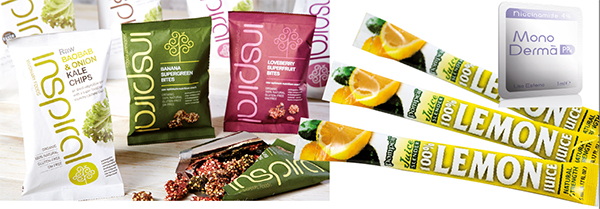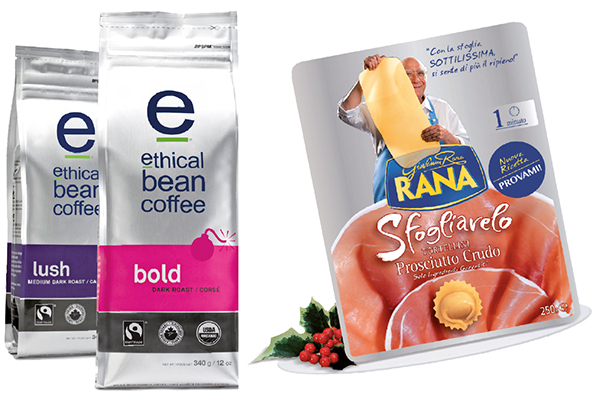Flexible packaging for converting – Data 2015
These complex and constantly evolving solutions saw positive growth in 2015, both in domestic demand and in exports. The use of flexible packaging is also on the rise in fields not traditionally associated with it.

This type of packaging - which includes flexible and semi-rigid forms - as is known, has a complex structure composed of many different materials: cellulose, plastic, aluminium film or metalization.
Combinations of the various materials are designed according to the properties of the product inside and the shelf life required.
In terms of life cycle, flexible packaging is among the few types in the sector to continue to enjoy progressive and promising growth. In recent years, this growth has been mainly driven by new markets: frozen and refrigerated ready meals, 4th range fresh fruit and vegetables, pre-packaged and pre-weighed fresh foods newly on the market, handling of fresh fish products from the fish farm to the POP, etc.
The food sector continues to be the primary outlet market, with a 91% share.
Another important factor in this sector is its heavy orientation towards exports, which on average represent 44-48% of production.
Even during the three-year period 2011-2013, the flexible packaging for converting market managed to stave off the effects of the economic crisis. In particular, production continued to show positive growth thanks to increased exports, which compensated for a slight decline in domestic demand.
Raw materials for the production
The progressive lightening of flexible packaging has carried with it alterations to the mix of raw materials used for the production of laminates: as a general trend, thin aluminium foil is being replaced, where possible, by metalization (aluminium), and paper and board are also losing ground slightly.
Plastic films are also seeing a reduction in grams per square meter. The increasing recourse to barrier films (e.g. Nylon, EVOH, etc.) often enables reducing the number of layers or the thickness of films.
This process is made possible by intensive research efforts to identify new materials and manufacturing processes, and the changes have been enabled by the design of plastic multilayer solutions, which serve the same functions as cellulosic sheet and aluminium foil.
The offer and the market
Approximately 78 flexible packaging manufacturers currently operate in Italy.
In 2015, domestic demand stood at 190,000 tonnes, a 2.7% increase over 2014.
Particularly strong was the performance of exports, which grew by 6%. Exports have always represented an important component of this market (with some concerns exporting over 70% of their production), thanks to the high quality of products and services offered by Italian converters.
In 2015, turnover reached 2,050 million Euro (+4.3% compared to 2014).
The combined strong performance of both demand components enabled the sector to close the year with 4.3% production growth.
Imports remain modest at 1-2% of national consumption.
67% of flexible polylaminates for converting are “all plastic”, 8% contain aluminium, and 25% contain paper sheets combined with plastic.
Sectors of use
Food. The food sector remains the primary outlet market for flexible polylaminate packaging (90.7%), and this widespread use is due to various factors: the rise of pre-weighed and pre-packaged foods, usually in protected atmosphere; ready meals in protected atmosphere; the spread of 4th range fresh fruit and vegetables, etc.
Within the food sector, there are two categories that predominate: products for baking and pasta (appr. 25%) and milk products, i.e. cheese, yogurt, butter, etc. (18.6%).
In the former category, the highest volumes of flexible packaging are used for industrial fresh pasta and ice cream.
Fresh pasta is the sector with the highest growthrate. This is both due to a rise in consumption of the various types of this pasta and to retailers orienting towards promotion of various retail brand products packaged in protected atmosphere.
As for milk products, the largest quantities of flexible polylaminates are used for pre-packaged, pre-weighed cheeses, both industrial and retail.
As for the remaining food sector categories, their use of flexible polylaminates for converting breaks down as follows:
- processed meats and cold cuts (7.8%): progressive growth for both industrial products and those packaged by retailers;
- frozen foods (7.5%);
- coffee (4.5%);
- pet food (3.7%), where the use of flexible packaging is growing due to the sector’s overall growth, but also thanks to a decisive orientation towards this packaging type for both dry and wet foods, to the detriment of other solutions.
Flexible packaging also finds other applications in in the food sector with promising growth potential, particularly various preserves, sauces, creams, etc.

Non-food. In the non-food category, household detergents account for 4.6% of production, and, in this case, flexible polylaminates have strong growth potential in light of the rise of additives for washing machines in the form of compresses, where the flexible bag tends to replace the cardboad box.
The pharmaceutical and cosmetics/perfumes sector makes up 4.6% of consumption, with decent growth prospects. The strong performance of both sectors is driven by the growing trend of offering an increasing number of monodose formats, which have basically two possible packaging solutions: the polylaminate pouch for converting and the plastic flacon.
Plinio Iascone
Istituto Italiano Imballaggio

















